Archive for the ‘Orange County hair transplant’ Category
Friday, March 4th, 2011
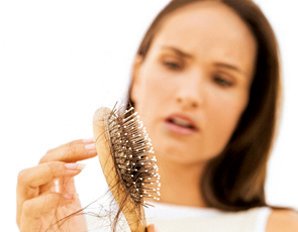 Many patients that come in to my office have a common complaint; hair shedding (some even bring in a ball of hair they have collected from their brush and bathroom floor) and in most cases they are women with long hair. For the most part hair shedding alone is not a sign of hair loss. Shedding is losing thick hair that has completed its growth phase and started its resting phase. Many patients that come in to my office have a common complaint; hair shedding (some even bring in a ball of hair they have collected from their brush and bathroom floor) and in most cases they are women with long hair. For the most part hair shedding alone is not a sign of hair loss. Shedding is losing thick hair that has completed its growth phase and started its resting phase.
- Examples of Normal Hair Shedding
All humans experience a level of hair shedding. It can be up to 100 to 200 hairs per day. Hair shedding is sometimes more exaggerated in people who have had a large surgery, trauma, experienced physiological or emotionally stressful events and women who have recently delivered a child. This is called Telogen Effluvium (excessive temporary loss of telogen hair). In most cases hair shedding is typically temporary and the affected hair will grow back within a few months. There is no cause for concern, unless you have a more visible scalp or thinning of the scalp hair. In which case, you should come in to see a certified hair restoration surgeon.
- The 3 Stages of Human Hair Growth
- Anagen ( Growing stage)
- Catagen (Transitional stage)
- Telogen ( Resting stage)
- Active Hair Loss Determined by Miniaturization Study
Almost every patient that visits US Hair Restoration will have a miniaturization study performed on them, to evaluate their degree of the fineness of their scalp hair which are signs of active hair loss, or in other words scalp hair miniaturization. People with active hair loss show 20-30% more thinning hair than the average person who experiences normal hair shedding. If you feel that you are experiencing active hair loss, we recommend you come into one of our five offices in California( San Francisco, San Diego, Orange County, Beverly Hills and Encino), for a free consultation.
Tags: active hair loss, free consultation, hair growth, hair loss, miniaturization study, normal hair shedding, resting phase, scalp hair miniaturization, telogen efflevium, us hair restoration
Posted in Beverly Hills hair transplant, California hair transplant, Orange County hair transplant, San Diego hair restoration, San Francisco Hair Transplant, Uncategorized, women hair loss | No Comments »
Thursday, November 18th, 2010
Hello blog readers,
I have some great news about US Hair Restoration’s current hair transplant costs!!
As the result of a recent meeting between my staff members and I, there will now be a Holiday Special beginning on December 1, 2010 at US Hair Restoration. This special will be offered for an extremely limited time and is one of the lowest prices for quality hair restoration yet.
We realize that holidays are quite busy for some people and that certain patients will need to book their procedure on a specific date in order to keep their schedules in tact. To accommodate this need of many of our patients, a rare discount of 40% off regular hair transplant costs will be offered to all of our valued clientele who have flexible schedules and are willing to book their procedures within 7-10 days of the procedure itself. By offering this discount to our patients with flexible schedules, we hope to accommodate the needs of all of our valued patients while not sacrificing the high quality that US hair Restoration stands by and is known for worldwide.
With this limited time discount, hair transplant costs at US Hair Restoration will be:
Offer only valid until January 31, 2011. Call 888-302-8747 to schedule your free consultation today. For additional information on the procedures we offer here at US Hair Restoration, feel free to check out our detailed webpages on Follicular Unit Transplants and Follicular Unit Extractions. We look forward to meeting you all in office soon!
Tags: cost of hair restoration, cost of hair transplant, hair restoration cost, hair transplant cost
Posted in Bakersfield hair transplant, California hair transplant, hair transplant, men hair restoration, Newport Beach hair transplant, Orange County hair transplant, San Diego hair restoration, san diego hair transplant, Uncategorized, women hair loss | No Comments »
Tuesday, November 2nd, 2010
Dr. Mohebi is the medical director of US Hair Restoration’s hair transplant centers in Southern California. With offices centrally located amongst the major cities of Encino, Beverly Hills, Orange County, San Diego, and San Francisco, CA, Dr. Mohebi has made himself available to almost every major part of the California’s population. In addition, Dr. Mohebi is the author of Hair Restoration Blog where he responds to the questions/concerns of many aspects of hair loss and hair restoration. In addition to his blog where Dr. Mohebi answers basic questions regarding hair loss and hair restoration, the doctor has also been interviewed (for the second time) by Hair Care Beverly Hills of Buzymoms.com
Below you can see some of Dr. Mohebi’s main responses to questions posed by the interviewer.
In response to the question of whether or not clients are eligible whom have already had hair restoration and are unhappy with the results, the doctor responded: Yes, hair transplant repairs are possible and are a good portion of the hair transplant surgeries performed in our Southern California offices (mainly located in Beverly Hills, Encino,Orange County, and San Diego hair transplant consultation). Many people may have unnatural results from previous hair transplants due to the older techniques (such as plug surgery), but some may even have problems with recent hair restoration procedures due to technical issues or lack of proper judgment on the part of the hair transplant surgeon. In most situations, the repair is easy and can be done in one to two sessions.
In regards to the question of whether or not there is a minimum age requirement for hair restoration, Dr. Mohebi stated: It is not unusual for a hair transplant surgeon to discourage a person younger than 24 from pursuing a hair restoration surgery. However, nowadays microscopic techniques being used to evaluate the miniaturization of susceptible hair can assist surgeons in predicting the final pattern of hair loss. By being able to predict each patient’s final balding stages, we are able to see where the pattern of baldness is heading and based on that, we can now recommend hair transplant surgery at an earlier age.
When asked about the donor scar following a hair transplant and whether or not it will be visible, Dr. Mohebi responded: If you do not plan on shaving your hair after your hair transplant surgery, your donor wound will never be visible. However, if you plan on shaving your head for any reason, you may choose to have a FUE or Follicular Unit Extraction procedure done rather than the general FUT procedure through removing a strip from the donor area. FUE transplant eliminates the visibility of a linear scar on the back of your head and is the best option for patients who plan on shaving their head or keeping their hair very short in the future.
To determine recommended options or graft numbers for your personal case, Dr. Mohebi suggests attending an in person consultation in any of his five California regional offices. In addition, he stated: Yes, the initial consultation with me (Dr. Parsa Mohebi) is complimentary in any of our California hair transplant offices in Beverly Hills, Encino, Orange County, San Diego, and San Francisco.
Lastly, the interviewer inquired as to what clients should bring with them to their free consultations and the doctor replied: Anything related to your hair loss and hair restoration, including family history of hair loss, other medical conditions that may have been attributed to ones hair loss, medical, surgical or even cosmetic changes that you like and may help you have a better result after a hair restoration procedure.
Tags: Beverly Hills Hair Restoration, Beverly Hills hair transplant, Dr. Mohebi, Encino hair transplant, fue, Los Angeles hair transplant, San Diego hair restoration, San Francisco hair transplant, southern california hair restoration
Posted in California hair transplant, hair transplant, hair transplant repair, men hair restoration, Orange County hair transplant, San Diego hair restoration | No Comments »
Tuesday, July 27th, 2010
Hair Transplant Surgeon Dr. Parsa Mohebi of Los Angeles, California was just approved for recommendation on well known website, the Hair Transplant Network, one of the largest online site that support hair loss patients. Dr. Mohebi has hair transplant offices in LA, Beverly Hills, Orange County with consultation offices in San Diego and San Francisco.
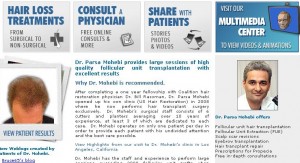 California Hair Transplant Surgeon, Dr. Mohebi Hair Transplant Network has truly changed the industry of hair restoration because of its viewer participation and their high demands from its members who participate on the Hair Transplant Network along with the participating physicians. All participating members of this site have such high expectations and constantly demand superior quality results, only physicians with a solid reputation and proven results are approved for recommendation through their lengthy and meticulous evaluation and assessment of the hair transplant surgeons.
Over the last two years, the hair restoration forum and participating community on HairTransplantNetwork.com have had the chance to review Dr. Mohebi, his technique, and corresponding results from his patients to determine his recommendations. Following the lengthy and worthwhile examination process, we are now happy to say that Dr. Mohebi is among the few qualified hair transplant doctors to be recommended by the renowned Hair Transplant Network.
We are hoping that US Hair Restoration and its medical director Dr. Parsa Mohebi can continue educating hair loss patients about hair loss treatment and hair restoration surgeries that are available to them. It made it easier for a larger group of hair loss patients to be able to see Dr. Mohebi’s outstanding hair transplant results. Please feel free to check out some of our patient results and physician comments on this site at anytime and do not hesitate to ask questions on the forum if you have any.
Thank you all for your support!!
Tags: beverly hills, hair restoration, Hair Restoration Forum, Hair Transplant Blog, hair transplant forum, hair transplant network, Hair Transplant Physicians, Hair Transplant Recommendation, hair transplants, HTN.com, Recommended Physicians for Hair Transplants
Posted in Beverly Hills hair transplant, California hair transplant, hair transplant, Los Angeles Hair Transplant, Orange County hair transplant | No Comments »
Saturday, January 23rd, 2010
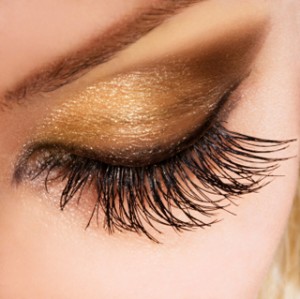
Q:
Hello, Doctor,
I’m an adult female in my early thirties. I’m trying to find a way to enhance my appearance but I don’t want to go under the knife, like breast enhancement or even lip enhancement. I’m not really a young girl anymore and feel like I need to look as good as ever to attract a good-looking man. I happened upon Latisse on the Internet and I’d like to know how to order it.
-
A:
Hi,
Thanks for the email. It’s always good to get inquiries from the general public. You can only obtain Latisse from a physician, and that’s with a prescription. Make sure not to buy Latisse anywhere except at a credible pharmacy or from a doctor’s office. It’s possible there may be phony Latisse-like products you may find on the street or on the Web. Stay away from these imitations; they may have dire side effects.
Side effects from taking Latisse are things like your eyelids becoming darker, likely temporary, and a likelihood that iris color may become much more brown, which is more likely to be a permanent condition.
On the flip side, Latisse will make your eyes look prettier. No doubt about that. People, women especially, want a soft, doe-eyed a look. With the chemicals found in Latisse, it will give your lashes a thicker look and make them longer. Latisse will actually increase the length of your eyelashes, for a certain period of time. Then they will return to their original look.
If you really desire your eyelashes to be longer, Latisse is for you. There are also doctors who perform eyelash transplants. I know people diagnosed with Alopecia Totalis sometimes get an eyelash transplant. Then there are those who don’t have a lot of eyelashes and want more, to enhance their physical appearance.
We do offer Latisse in all our Southern California hair restoration offices.
Tags: latis, latise, latisse, latisse buy, latisse eyelash, latisse eyelash enhancer, latisse prescription
Posted in California hair transplant, Newport Beach hair transplant, Orange County hair transplant | No Comments »
Tuesday, January 19th, 2010
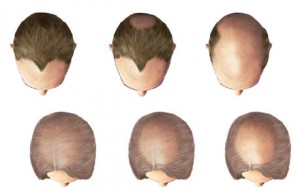
Q:
Hey Dr. Parsa Mohebi,
I’m grateful you took time out to see me on Saturday. The letter that gave a summary of what we talked about was very thorough and I just wanted to say thanks for that.
Since the last time we met, I did some of my own research and came up with a few queries:
1) When it comes to giving a name to my hair loss pattern, is Alopecia the correct way to describe it?
2) Would a Cortizone shot be an option for me?
3) Is laser therapy OK?
4) If I happen to use minoxidil, I’m wondering if it has to be 2% or would a higher percentage result in more hair growth and faster hair growth?
5) I was told to receive a complete medical evaluation, do you know of a doctor I can go to? I want someone I can trust.
Thanks again for taking the time to see me and also to accommodate my questions.
Sincerely,
Stephen
-
A:
Hello Stephen,
I’ve provided answers to your questions in chronological order.
1) When it comes to giving a name to my hair loss pattern, is Alopecia the correct way to describe it?
Alopecia, literally, would be defined as hair loss. There are many different types of alopecia or hair loss, such as male patterned alopecia or female patterned alopecia or alopecia cicatricial. I believe the pattern on your head is a male pattern since hair was lost in the frontal area as you kept hair on the donor area intact. This is the reason you may be a potential candidate for a hair transplant since your medical evaluation stated that you’re not medically treatable for hair loss.
2) Would a Cortizon shot be an option for me?
Absolutely not. But steroid shots are sometimes used for Alopecia Areata (AA), which is an autoimmune disorder. Alopecia Areata is a hair loss condition with patchy hair loss spots. Your condition is not Alopecia Areata.
3) Would you consider laser therapy?
I do not recommend laser therapy for hair loss in the form of laser comb or laser machines because of the lack of solid medical evidence that support their effectiveness at this time.
4) If I were to use Monoxidil, does it have to be 2% or a higher percentage would yield more and faster hair growth?
You can start with 2% and then you need to be re-evaluated in six to 12 months and a treatment plan might need to be adjusted at that time.
5) you recommended a complete medical evaluation, could you please recommend someone that you trust?
Any good internist or endocrinologist could follow through with the lab works that you need. Our letter includes the list of medical conditions that should be considered and lab works to rule out those women like you who have hair loss. You can share my letter with any good internist or endocrinologist and he or she should be able to follow through with your lab result and treat any treatable conditions that could possibly be found.
Have a great day,
Tags: alopecia areata, hair loss, hair loss pattern, hair loss treatment, laser therapy, laser therapy for hair loss, minoxidil
Posted in Bakersfield hair transplant, California hair transplant, hair loss medication, hair loss products, hair transplant, men hair restoration, Newport Beach hair transplant, Orange County hair transplant | No Comments »
Friday, January 15th, 2010

Not too long ago, consumer columnist David Lazarus, in a Los Angeles Times story, mentioned he had visited an open house at a hair transplant office and, to his surprise, saw that there were a lot of men who showed up. For him, it was unexpected. Lazarus said he had a conversation with the owner of the hair transplant center and learned that, in this fragile economy, a lot of men who are shopping for a hair transplant are thinking that it will better their job opportunities by having a full head of hair.
According to a CNN report, findings have shown that people who are better looking, or are slim (vs. fat), or who are of a younger age tend to have better success in the nation’s economy. These “lookers” bring in more money, have a better chance of moving up in the company, and tend to be treated more graciously. Albeit the results of this study may be a bit disturbing, it may be a somewhat accurate reflection of our society.
When we take into account these conclusions, it ought to come as no surprise that there are balding men in America who really hold fast to the idea that they can boost their chances of landing a job by sporting a full head of hair. It might just end up being a mental edge, or a self-esteem enhancer, for these adult males to give a good impression during their interviews.
All things considered, in my humble view, the crucial aspect of a job interview is a how a potential employee presents himself to his interviewer. The responses she gives, her demeanor, attitude about previous employers, and overall impression.
But, these days, some men believe it wouldn’t decrease their chances to have a full head of hair. In addition, due to the slumping economy, a hair transplant cost is at an all-time low for high-quality hair restorations. If there ever was a time to get a hair transplant for those who, under different circumstances wouldn’t get one, now is the time.
Tags: balding men, hair loss, hair loss and job prospects, hair restoration, hair transplant, job prospects, men hair loss
Posted in Bakersfield hair transplant, California hair transplant, hair transplant, men hair restoration, Newport Beach hair transplant, Orange County hair transplant | No Comments »
Tuesday, January 12th, 2010

In the past 30 years, alternate types of therapy for enhancing wound repair have been mentioned. For this entry, I wanted to talk about the cutting-edge areas of stem cell therapy and gene therapy in wound healing. When it comes to gene therapy, it was first put into practice for treating congenital defects. Now, it is a fresh alternative for affecting wound repair. To speed up the process of wound closure, genes encoded for growth factors or cytokines revealed the greatest potential.
Most gene delivery systems have roots in viral transfection, naked DNA application, high pressure injection, or liposomal vectors. Embryonic and adult stem cells posses an extended self-renewal ability with the capacity to differentiate into various tissue types. Different types of sources, such as bone marrow, peripheral blood, umbilical cord blood, adipose tissue, skin and hair follicles, have been used to separate stem cells to speed up the healing response of acute and chronic wounds.
Not too long ago, the grouping of gene and stem cell therapy has come to the forefront as a potential option to care for chronic and acute wounds.
For potential hair transplant patients, this breaking development about gene and stem cell therapy in hair restoration is fantastic news because a rapid healing from stitches in the donor area would make for a much quicker and painless procedure. There are all kinds of different types of hair loss, but, if a hair loss sufferer undergoes a hair transplant, it would be imperative that his stitches would heal quickly.
Source information was provided by the following authors: Branski LK, Gauglitz GG, Herndon DN, Jeschke MG.
Department of Surgery, The University of Texas Medical Branch and Shriners Hospitals for Children, Galveston, TX 77550, United States.
Tags: donor scar, gene therapy, hair loss, hair restoration, hair transplant, stem cell therapy, wound healing, wound treatment, wounds
Posted in Bakersfield hair transplant, California hair transplant, hair transplant, men hair restoration, Newport Beach hair transplant, Orange County hair transplant | No Comments »
Saturday, January 9th, 2010
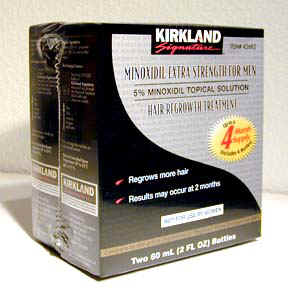
The possibility of restoring hair loss through alternative hair restoration options such as by using finasteride or Rogaine is an issue some people may be wondering about. Although hair restoration through these shortcut methods (without a hair transplant procedure) might be OK for some people, I can’t advocate it as a full-fledged solution. Advertisements may try to sway you into believing it is the answer.
Today, FDA has OK’d certain medications for hair loss prevention: finasteride and minoxidil. I must say, both are legitimate treatments, but they may have various indications for a male and female baldness pattern. But they are not, I repeat, they are not a cure-all solution for male patterned baldness, as other pharmacy industry experts may try to get you to believe.
A hair transplant ought to be thought of as a preventive agent, along with other alternativest. And also as vital part of a bigger plan on looking your best. A lot of men and women experience shock loss after a hair transplant surgery; these people are required to try preventative measures like finasteride, at least a month or two before the hair transplant.
Since hair restoration surgery started (in the 1990s) and until recently, when a hair restoration surgery was done, shock loss had been a significant issue hair transplant patients had to deal with.
But these days, a good majority of patients go on finasteride after a hair transplant surgery.
Tags: fda, finasteride, hair loss treatment, medical hair restoration, minixidil, prevention of balding, shock loss
Posted in Bakersfield hair transplant, California hair transplant, hair loss medication, hair loss products, Newport Beach hair transplant, Orange County hair transplant | No Comments »
Tuesday, January 5th, 2010

The fruit Serenoa Repens produces Saw Palmetto. Saw Palmetto is an extract of it. Saw Palmetto has plenty of fatty acids and phytosterols. Considered by many to be an alternative medicine for different kinds of indications, most notably benign prostatic hyperplasia (BPH).
People who are diagnosed with benign prostatic hyperplasia (BPH) have enlarged prostates have difficulty urinating to the point that patient may need prostate surgery for it.
The part Saw Palmetto plays in hair restoration has been well researched. Incredibly, for a lot of people, Saw Palmetto is a plant-based treatment which, up to a certain point, can reverse the hair loss process or delay hair loss. Saw Palmetto’s bio active ingredients block the conversion of testosterone into dihydrotestosterone (DHT).
So, on the hair follicle level, Saw Palmetto is able to halt the process of hair loss. In addition, Saw Palmetto promotes the increased thickness of miniaturized hair, helping them grow longer. In mechanism, the Saw Palmetto effect is sort of similar to finasteride or other DHT blockers. Available in oil extract, Saw Palmetto can be used topically on hair scalps or as pills to treat prostate enlargement.
Tags: balding prevention, benign prostatis hyperplasia, BPH, dht, dihydrotestostrone, finasteride, hair loss product, hair loss treatment, male patterned baldness, saw palmetto, Saw Palmetto Extract
Posted in California hair transplant, hair loss medication, hair loss products, men hair restoration, Newport Beach hair transplant, Orange County hair transplant | No Comments »
|
|
 Many patients that come in to my office have a common complaint; hair shedding (some even bring in a ball of hair they have collected from their brush and bathroom floor) and in most cases they are women with long hair. For the most part hair shedding alone is not a sign of hair loss. Shedding is losing thick hair that has completed its growth phase and started its resting phase.
Many patients that come in to my office have a common complaint; hair shedding (some even bring in a ball of hair they have collected from their brush and bathroom floor) and in most cases they are women with long hair. For the most part hair shedding alone is not a sign of hair loss. Shedding is losing thick hair that has completed its growth phase and started its resting phase.







